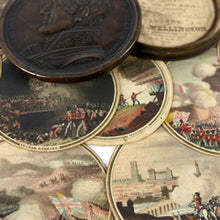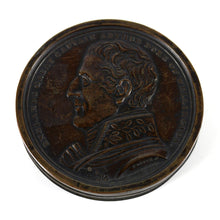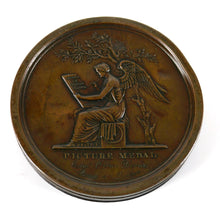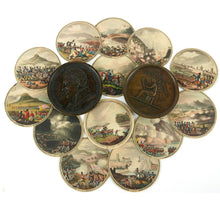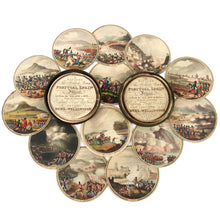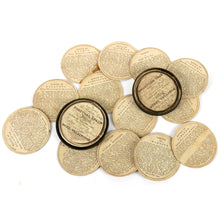Record of British Valour - Wellington’s Victories, 1817
- Regular price
- £1,750
- Sale price
- £1,750
- Regular price
-
- Unit price
- /per
Adding product to your cart
Diameter: 7.5cm (3in)
Provenance: Norman Bobins Library
A complete set of thirteen hand-coloured aquatints with two engraved title pages pasted to the top and bottom of a bronze medal case to form a ‘Record of British Valour’ depicting the victories of the Peninsular War and Waterloo 1815, by I. Porter & E. Orme. The obverse of the medal box with relief uniformed profile bust of the Duke of Wellington bare headed signed ‘Porter’ under the shoulder, and encircled with the legend ‘ENGLAND'S GREAT CAPTAIN ARTHUR DUKE OF WELLINGTON’. The reverse with the figure of Victory seated beneath a tree inscribing a tablet, ‘RECORD OF BRITISH VALOUR/ PICTURE MEDAL’ .
Edward Orme (1775-1848) was by turns an engraver, printseller and property developer. The son of a Manchester cloth manufacturer who came to London around 1794, his first engraving was published by his brother Daniel in that year. `in 1799 he was appointed print seller in ordinary to George III and in 1820 editor of prints in ordinary to George IV. In May 1800 he had a shop in Conduit Street, London (at the corner of George Street), and in 1801 exhibited a portrait at the Royal Academy. In the same year he established himself at 59 New Bond Street, London, at the corner of Brook Street. In a second career as a property developer, he was he helped build Orme Square in Bayswater, as well as other places in the area.







